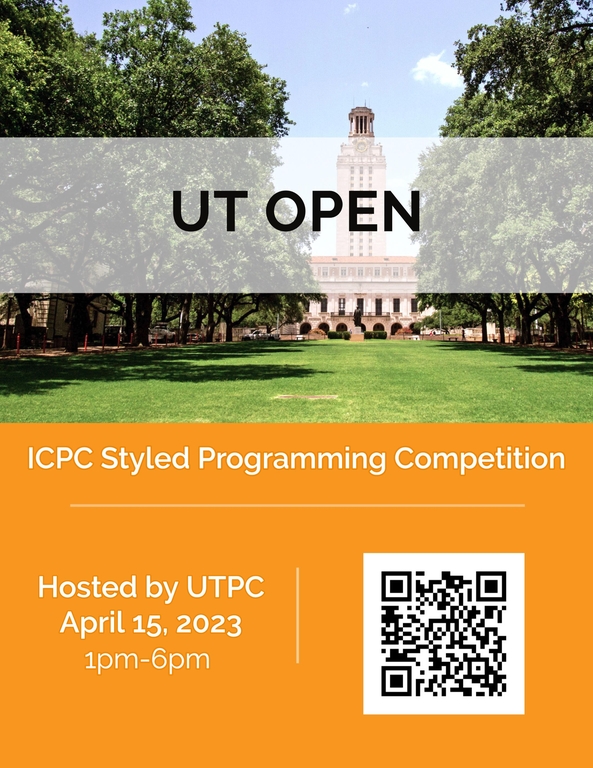
Hello, Codeforces!
UTPC, the competitive programming organization at the University of Texas at Austin, is happy to invite you to participate in the 2023 edition of the UT Open (UTOPC) which will be held on Saturday, April 15, 2023 at 1:00PM UTC-5 (CDT).
You will be given 14-17 problems and 5 hours to solve them, with standard ICPC scoring. There will be a wide range of difficulties -- anyone is welcome to participate! This is a team contest, meaning that you are allowed to compete in teams of up to 3 members (it is totally acceptable to compete without teammates as well). This is (of course) not an official Codeforces round, and is thus unrated.
Prizes will be available to students competing in person in Austin (at the Gates-Dell Complex), and further prize information is TBD.
The problems were prepared and tested by Prayaag Gupta, speedycatfish, porkchops, nwx, blueberryJam, jxin31415, fishy15, bridgeminion, chickencode, picroft, abhonsley00, DylanSmith, oopsimbad, and myself.
And also a huge thanks to Marlov for planning logistics and JamsRamen for help with testing problems!
We would like to thank:
evouga2 and gpdowning for being great resources and coaches for the UT Austin ICPC teams,
Citadel | Citadel Securities, our generous sponsor,
MikeMirzayanov for the great platforms Codeforces and Polygon,
and all of you, for participating!
Good luck and have fun!
UPD: For those wondering, the contest is in the Gym tab.












